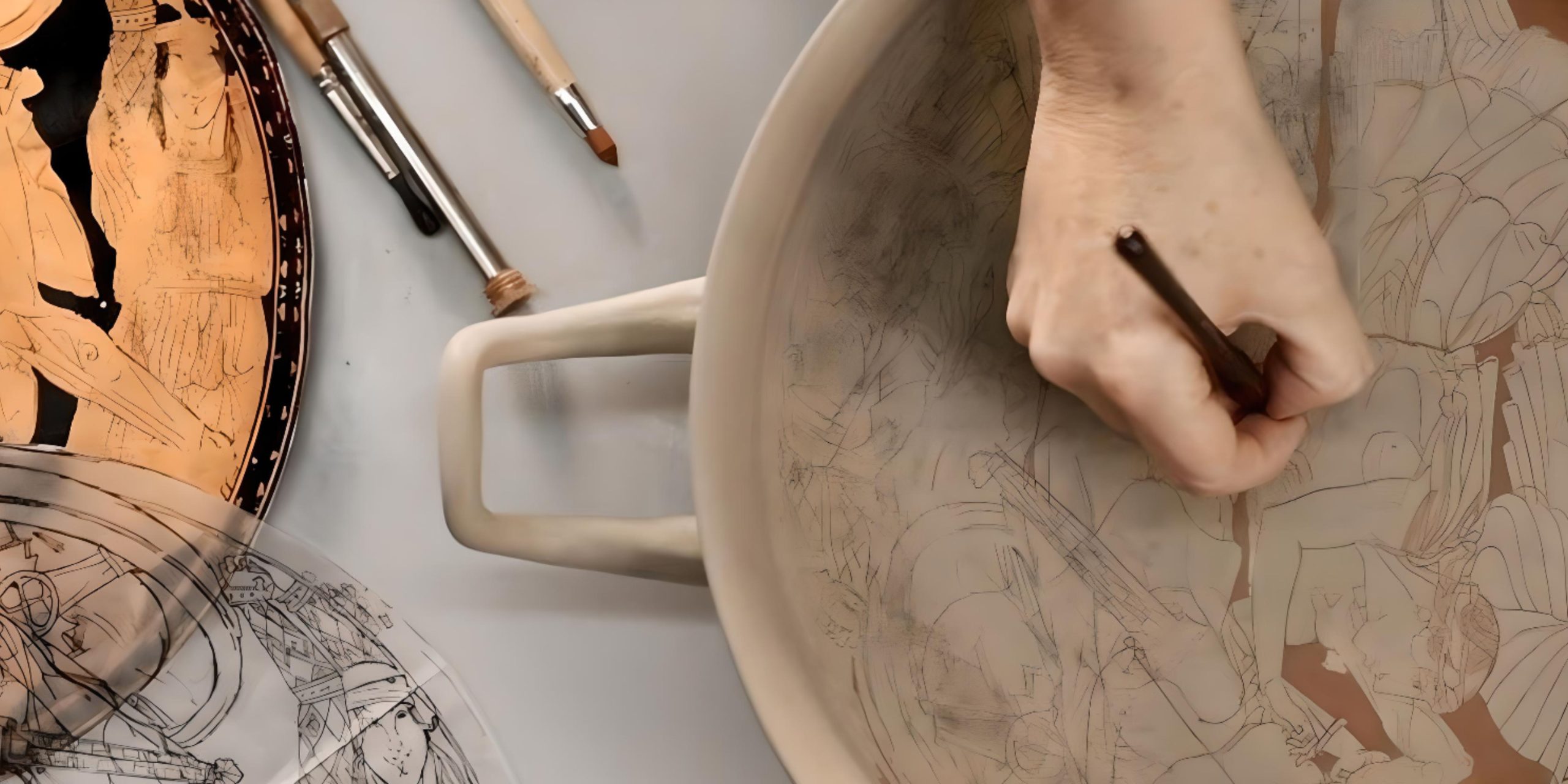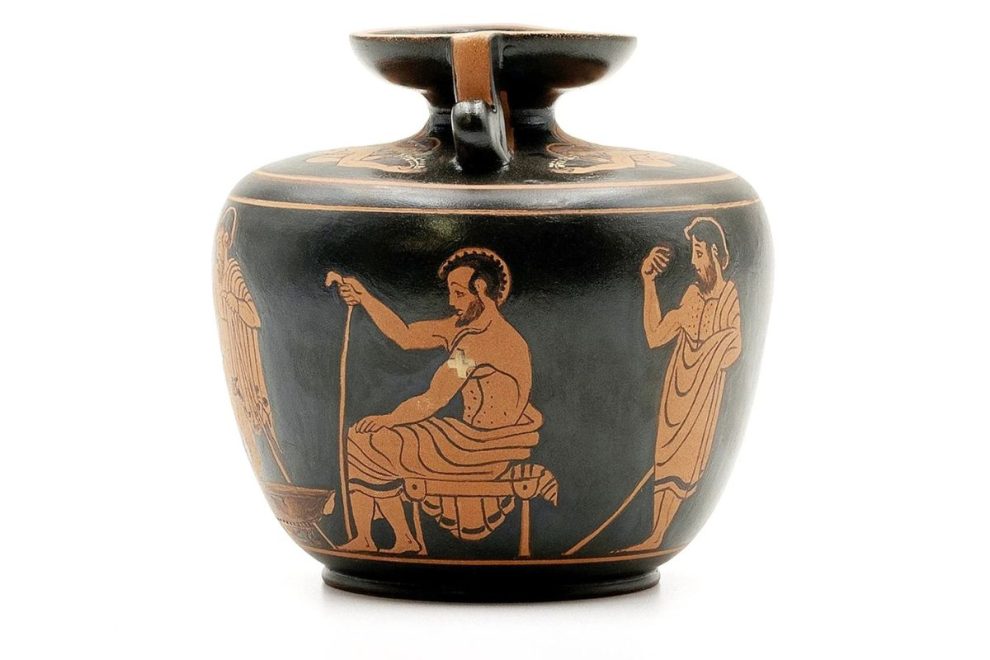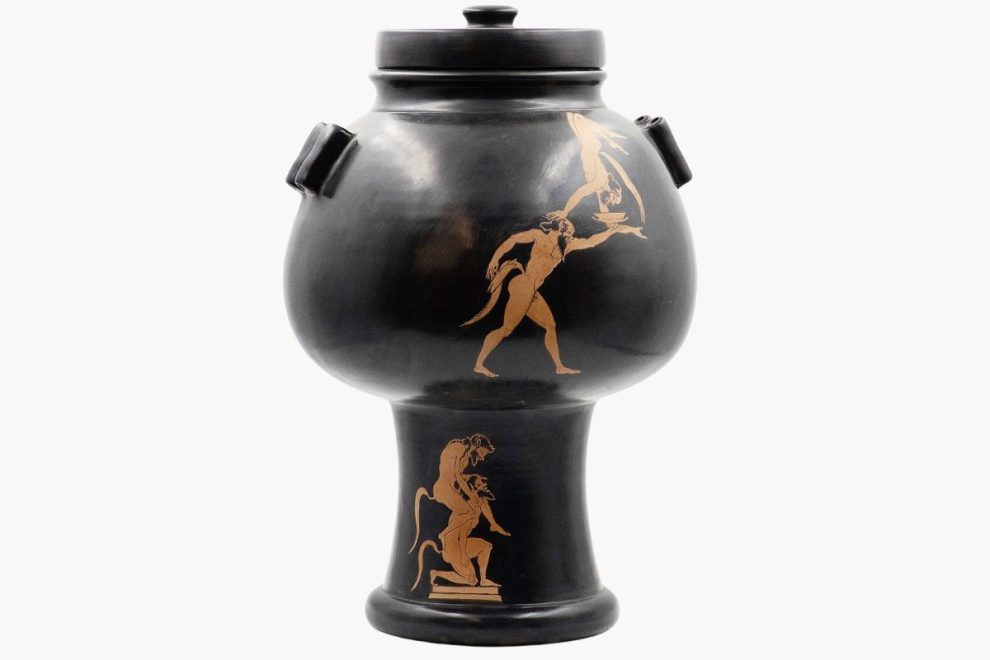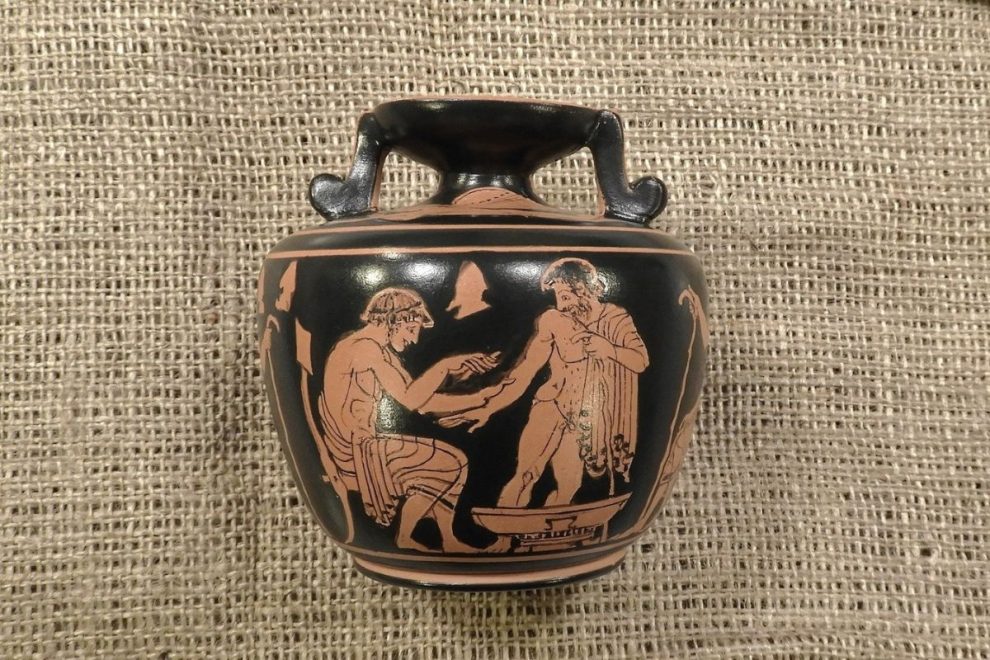
Ancient Greece left behind a rich legacy of stunning art, with vase painting being a key part of it.
Key Highlights
- Red-figure pottery, a prominent form of ancient Greek art, emerged around 530 BC in Athens, showcasing a revolutionary artistic technique.
- This technique reversed the color scheme of the earlier black-figure pottery, featuring red figures against a black background.
- This shift allowed for greater detail and more lifelike portrayals of human forms and narratives.
- Ancient Greek red-figure pottery provides us with a visual record of their mythology, daily life, and rituals.
- From Athens, the style spread throughout Greece, significantly impacting the artistic landscape of Southern Italy and beyond.
One standout style in this ceramic art is red-figure pottery. This style has captured the attention of art lovers for many years. In this blog, we will explore the amazing world of ancient Greek red-figure pottery. We will look at where it came from, how it was made, and the stories told on its surfaces.

The Origins of Ancient Greek Red-Figure Pottery
Red-figure pottery started around 530 BC. It was a big change from the black-figure style that was common at the time. The old style used black figures on a red background. In contrast, red-figure pottery showed red figures on a black background. This new technique was introduced by the Andokides Painter and became popular in Athens. The first pieces were often seen on “bilingual vases,” which showed both black-figure and red-figure scenes. These vases showed how artists explored the new technique and its many options.
The Evolution from Black-Figure to Red-Figure Techniques
The change from black-figure to red-figure techniques was an important time in ancient Greek art. This new way of painting was a big change from how vase painting was usually done. It moved the color of figures from black to a natural reddish-orange, which came from the clay. This simple change had a big impact. Instead of carving into the black figures, the red-figure technique let artists paint fine lines right onto the clay. This way, they could add more details and make their subjects feel alive and gave artists a better way to express themselves. They could show body features accurately, and the clothes looked more realistic. Plus, the black background highlighted the bright red figures, making it easier for people to focus on the story shown on the vase.
Key Differences Between Black-Figure and Red-Figure Pottery
The differences between black-figure and red-figure pottery were not just about looks; they marked a change in artistic options. This shift was important for the growth of fine pottery. It showed how creative ancient Greeks were in their craft. The main difference was how the colors were used. Black-figure pottery painted figures in black slip on the natural orange color of the clay. On the other hand, red-figure pottery kept the figures in the clay’s color and painted the background in black. This change allowed for more detail. Artists of red-figure pottery could paint intricate features directly onto the clay instead of just carving lines. This meant they could show more expressions and details in the anatomy. In addition, red-figure pottery used new relief lines. These raised lines, made with thicker slip, added subtle depth to the figures. This technique highlighted the shapes of the figures and made them stand out against the background, giving a three-dimensional feel to the artwork.
Find out here the Evolution of Greek Pottery Styles.
Purpose of Ancient Greek Red-Figure Pottery
Ancient Greek red-figure pottery shows many lively scenes. These scenes give us a look into different parts of ancient Greek life. Besides looking nice, these pots served both everyday and special purposes. They were an important part of their culture. Red-figure pottery came in many shapes and sizes, each made for a certain use. Amphorae had two handles and a narrow neck. They were used to store and carry liquids like wine and olive oil. Hydriae had three handles and were made to collect and pour water. Kraters were big and wide. They worked as bowls for mixing wine at symposia, which were social parties for rich men. Smaller pots, like lekythoi and aryballoi, held scented oils and were often used in funerals. The pictures on these pots changed based on what they were used for. Everyday pots showed scenes of home life or sports competitions. In contrast, pots for special events often showed stories from myths or funeral ceremonies, showing how people viewed life in ancient Greece.
Key Regions in the Development of Red-Figure Pottery
Athens was the starting point for red-figure pottery. This style quickly spread beyond Athens and became a key part of ancient Greek pottery. Southern Italy, especially places like Apulia, Campania, and Lucania, played a big part in growing this art form. In these areas, new types of red-figure pottery appeared. They were inspired by what was made in Athens but also added local styles. Apulian vase painting is known for its detailed designs and colorful patterns. It thrived in cities such as Taras, now called Taranto. The pottery workshops in Campania, including Capua and Cumae, created their own style. They often featured scenes from plays and showed native warriors. Although Corinth was famous for black-figure pottery, it did not embrace red-figure pottery as much as other places. Still, you can see some of its influence in the early red-figure works in Athens and Southern Italy.

Iconography and Themes in Ancient Greek Red-Figure Pottery
Ancient Greek red-figure pottery was more than just decoration. It served as a way to tell stories, showing their myths, beliefs, and daily life. The detailed paintings give us a look into the rich world of the ancient Greeks. The themes on red-figure pottery range from stories of gods and heroes to scenes of regular life. These painted stories help us understand the complex society of ancient Greece. We can see how they viewed the divine, their social practices, and even their sense of humor.
Find out more about the Greek Pottery Designs.
Mythological Narratives and Everyday Life
Ancient Greek red-figure pottery showcased many themes. These included their fascinating mythology and everyday life. Many vessels depicted scenes from famous poems like Homer’s “Iliad” and “Odyssey.” They captured heroic actions of characters such as Achilles, Odysseus, and Heracles. In addition to these mythical scenes, daily life pictures offered close views of ancient Greek society. Images showed athletes training for the Olympic Games, women doing household chores, and musicians entertaining guests at symposia. These scenes revealed their customs and activities. Dionysus, the god of wine, parties, and theater, appeared often in red-figure art. Dionysiac scenes, which showed satyrs, maenads, and the god himself in celebrations, reflected the lively spirit of this cult. Through these themes, ancient Greek red-figure pottery gives us insight into their civilization, including their values, beliefs, and everyday life.
Find out more about the types and styles of Ancient Greek Vases.
Symbolism and Significance of Common Motifs
Many figures and symbols in ancient Greek red-figure pottery had strong meanings that showed how the ancient Greeks saw their world. These meanings added depth to the stories on the pottery and made them more important culturally. Female figures appeared often on these pots, and their meanings varied based on their traits and the scene shown. Goddesses like Athena, who represents wisdom and warfare, and Aphrodite, the goddess of love and beauty, were easy to recognize by their unique features. Mortal women were shown in different roles, including wives, mothers, and musicians. Some figures, like Heracles, had significant importance in Greek myths. Heracles was famous for his great strength and for completing twelve difficult tasks. He represented bravery, hard work, and human victory over tough challenges. The table below shows common motifs and their meanings.
| Motif | Symbolism |
| Laurel Wreath | Victory, achievement, and high status |
| Owl | Wisdom, associated with the goddess Athena |
| Grapevine | Dionysus, wine, revelry, and the cycle of life |
| Lyre | Music, poetry, and the arts |
| Griffin | Guardian figure, protector of the dead |
Identifying Artists and Workshops Through Red-Figure Pottery
Many names of old Greek artists are lost.However, we can tell apart certain artists and their workshops by the distinctive styles in red-figure pottery. These talented workers didn’t always sign their work. Yet, they left behind unique marks that help us understand their art and see how they influenced others over time. By closely studying details like how figures and drapery are shown, along with certain patterns, experts can find out who painted specific pieces. John Beazley was a key figure in this study. He spent years looking at and sorting thousands of vases. Because of his work, we can better understand how red-figure pottery changed. He created a system to name artists based on their styles. He named artists like the “Berlin Painter” or the “Achilles Painter” by matching their styles to their important works.
Firing Process of Red-Figure Pottery
The making of red-figure pottery used a unique firing process. This process changed common clay into strong and beautifully decorated pots. Knowing how this procedure worked helps us appreciate the skill of ancient Greek artists more. The firing happened in a kiln, which is a type of oven that can get very hot. A key part of this process was controlling the oxygen levels inside the kiln. This firing had three stages: oxidation, reduction, and re-oxidation. In the first stage, called oxidation, the clay changed to a bright orange-red with plenty of oxygen. Next, the kiln’s heat increased and the oxygen supply decreased, creating a reduction atmosphere. The carbon monoxide built up and turned the shiny surface black, while the clay on the figures stayed red. Finally, the kiln cooled down, and oxygen went back in. This re-oxidized parts that weren’t covered by the slip, finishing the transformation.
Red-Figure Pottery Painting
The art of Athenian red-figure pottery was not just about skill; it required a strong understanding of design, shape, and the human form. Vase painters, like other artists, had sharp observation skills and knew their craft very well. Before they could start painting, the vase’s surface needed careful preparation. After shaping and drying, the vase was covered with a thin layer of slip, which is a mix of fine clay and water. When the slip dried to a soft, leathery feel, the vase painters could start their work. They used fine brushes and different colors, mainly black, to outline their designs. This included defining the shapes of the figures and adding decorations. They then included fine details, like folds in clothes and facial expressions. Relief lines, made by using thicker slip, gave depth and added dimension to the figures. After the painting was done, the vase went through the firing process, which fixed the designs and colors permanently.
Final Reflections
Ancient Greek red-figure pottery shows us the beauty of the classical period. It gives us a glimpse into the lives, beliefs, and creativity of the artisans who made them. This art still fascinates people today. It reminds us of how human creativity can reach beyond time. The bright scenes and fine details on these ancient pots make us feel amazed. We can marvel at the talent of these artisans. Their great work connects us with the ancient world directly.

